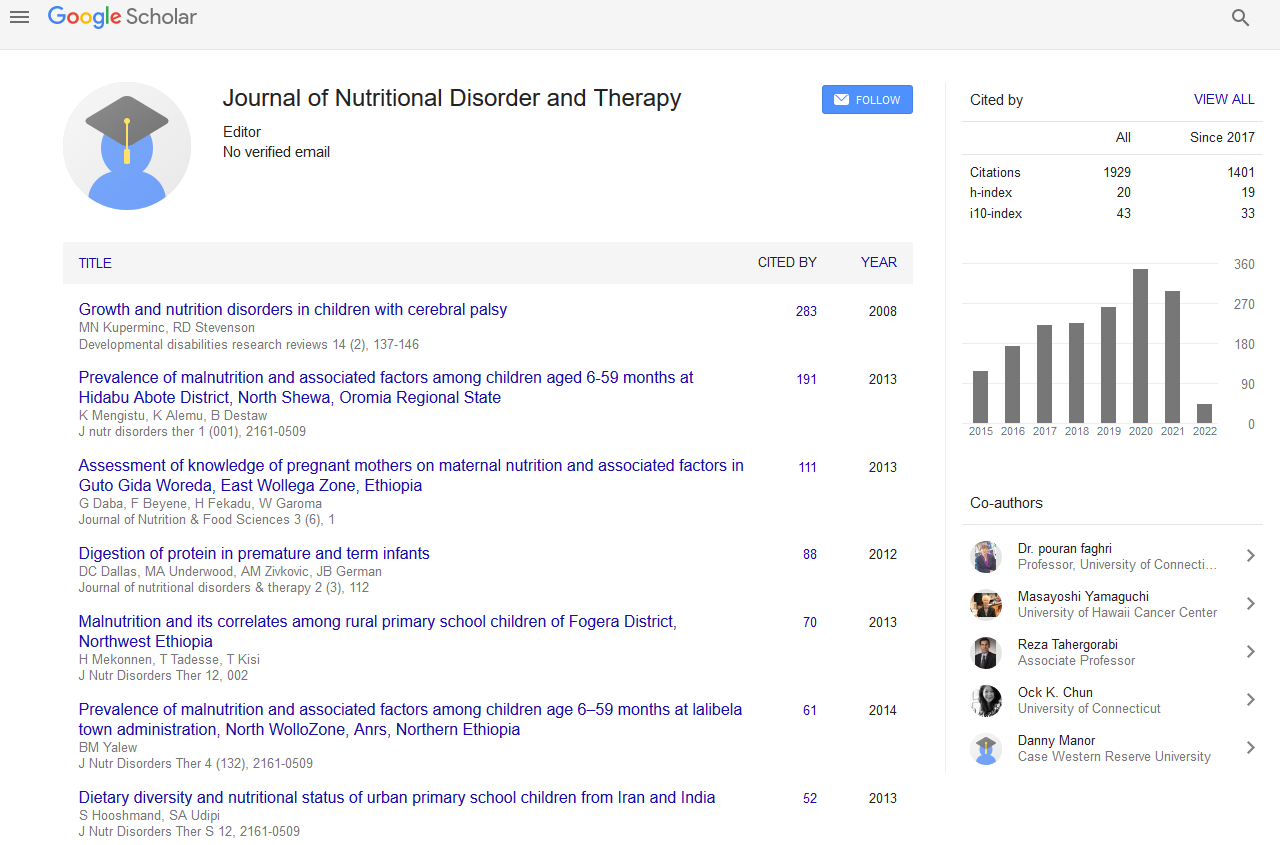Indexed In
- Open J Gate
- Genamics JournalSeek
- Academic Keys
- JournalTOCs
- Ulrich's Periodicals Directory
- RefSeek
- Hamdard University
- EBSCO A-Z
- OCLC- WorldCat
- Publons
- Geneva Foundation for Medical Education and Research
- Euro Pub
Useful Links
Share This Page
Journal Flyer

Open Access Journals
- Agri and Aquaculture
- Biochemistry
- Bioinformatics & Systems Biology
- Business & Management
- Chemistry
- Clinical Sciences
- Engineering
- Food & Nutrition
- General Science
- Genetics & Molecular Biology
- Immunology & Microbiology
- Medical Sciences
- Neuroscience & Psychology
- Nursing & Health Care
- Pharmaceutical Sciences
Abstract
Association of Vitamin D Level and Subclinical Coronary Artery Disease
Anas Alani, Sirous Darabian, Yanting Luo, Rine Nakanishi, Omar Al-Juboori, Suguru Matsumoto, Negin Nezarat, Matthew J Budoff and Ronald P Karlsberg
Background: The role of vitamin D level in subclinical atherosclerosis remains controversial. We aimed to investigate the relationship between vitamin D level and coronary artery calcium score (CACS).
Patients methods: We investigated 303 consecutive patients referred to an outpatient clinic for CACS. The 25-hydroxy vitamin D [25(OH) D] levels were checked within three months of CACS evaluation. Vitamin D levels of <30 and <20 ng/mL were used as thresholds of vitamin D insufficiency and deficiency, respectively. The correlation between CACS and vitamin D was assessed. Unadjusted and covariate-adjusted logistic regression analyses were used to predict positive CACS.
Results: The mean age in this study is 61.8 ± 11.8 years (39.9% female). The majority of patients enrolled were Caucasian (87.4%). Median (interquartile range) serum 25(OH) D concentration was 30.0 (23.0, 39.0) ng/ml. Vitamin D was insufficient (<30 ng/ml) in 47.2% and deficient (<20 ng/mL) in 14.9% of the sample. Positive CACS (CACS>0) was prevalent in 206 (68%) participants. In the unadjusted model, the 25 (OH) D levels were not associated with the prevalence of CACS among all cases or among patients with positive CACS. Logistic regression models, after controlling for risk factors, did not change the results. In addition, among the 206 participants with prevalent CACS, 25 (OH) D levels were not associated with CACS severity.
Conclusions: Our single centre retrospective study in a population with low prevalence of vitamin D deficiency failed to find a significant relation between 25(OH) D level and CACS even when adjusted for risk factors.


